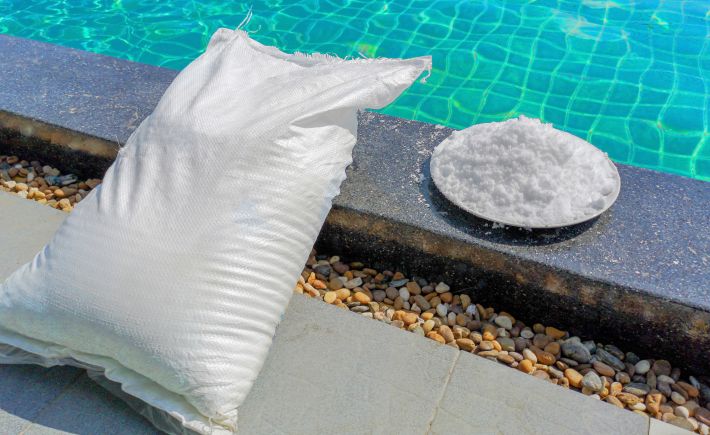For pool owners in Alabama, the winter months can mean saying goodbye to their chilly pool and hello to their warm and soothing hot tub. But what does it look like to shut down your inground swimming pool for the winter?
The process entails several key steps that will help keep your swimming pool safe from the elements and ready to perform when springtime rolls around again. Not only does winterizing your pool keep the pool safe, but it also keeps pets and children safe from falling into the pool on accident. These, and many more reasons, are why winterizing home pools is common practice for responsible pool owners all across Alabama. Let’s take a deeper look at the steps in the winterization process with Mr. Pool, Alabama’s custom pool experts.
PREPARING YOUR INGROUND SWIMMING POOL FOR WINTERIZATION
Before the actual process of winterization can begin, there are necessary steps to prepare your inground swimming pool for winterization. Chief among these preparation steps is deep cleaning your pool. This includes cleaning your swimming pool’s water, surrounding area, and interior of the pool itself.
As fall makes way for winter, the falling leaves often find their way into your pool. Use your pool net to carefully remove all of them, as well as any other debris from your pool’s water. Make sure your pool vacuum is hard at work collecting any submerged debris from the pool as well. Be sure to give your pool vacuum ample time to clean the entirety of the pool thoroughly. Also, brush the walls of your inground pool to remove any grime that could further contaminate your pool over the winter.
All of these steps will help prevent algae and mold growth over the winter months. Without prevention, the effect of algae growth in your swimming pool during the winter can be devastating, and often requires extensive work to be done in the process of cleaning and restoring your pool to its former health. In addition, proper preparation will make the balancing of your pool water’s pH levels an easier process. This is why preventing algae growth through careful cleaning and pH balancing is so important, and helps prevent time consuming and costly problems from arising.
THE INGROUND POOL WINTERIZATION PROCESS
Once you have properly prepared your inground pool, the winterization process can begin. First, balance your swimming pool’s water chemistry. To do so, you will need to test your pool water’s pH, alkalinity, calcium hardness and chlorine levels. Add chemicals as needed to properly balance the water in your swimming pool. As discussed earlier, balancing these levels is crucial to prevent algae growth when your inground pool is winterized.
Consulting with a professional pool cleaning service provider like Mr. Pool can help you make sure that the chemical level testing is done correctly and accurately. After your swimming pool’s water has been properly chemically balanced, shock the pool to break down any remaining contaminants in your pool. Be sure to do this at night to allow the chemicals to work properly, as direct sunlight can prevent these chemicals from doing their job.
After shocking your swimming pool, the next step in the winterization process is to use algaecide to kill remaining algae in your pool’s water. It is very important that you wait until the shock treatment is complete before you apply algaecide to your pool. It typically takes several hours for the algaecide to do its work. After it has, you are only a few steps away from finishing the inground pool winterization process!
DRAIN AND STORE POOL EQUIPMENT
One of the last steps in winterizing your swimming pool is to drain your pool’s filter, pump, chlorinator, heater by removing their drain plugs. Then, remove any remaining water in pipes on all of your pool equipment by using an air compressor or shop vac. This process will prevent remaining water from freezing inside pipes and damaging them. Storing your filter inside will further prevent cold weather damage from occurring.
LOWER YOUR INGROUND POOL’S WATER LEVEL
Lowering the water level in your pool is one of the final steps in winterizing your inground swimming pool. Lowering the pool’s water level is important even if there is a low freeze-risk in your area, as is the case in most of Alabama.
You should lower the water level of your swimming pool to different extents depending on which winter pool cover you use, as the cover rests on top of the water. Pool covers will have a guide to help you know the proper extent to which you should lower your pool’s water level. Follow this guide to ensure the best possible performance of your pool cover.
COVER YOUR POOL
The last step in winterizing your inground swimming pool is to cover it. Depending on the climate of your location, recommended covers vary. The right cover for your pool will prevent debris from entering the pool, and will more importantly keep people and pets from accidentally falling into the pool. This is a very important safety measure, especially for families with small children.
When your pool cover is securely applied, your pool will be successfully winterized! If you are an Alabama inground pool owner looking for help with the winterization process, pool maintenance, pool cleaning, or new pool construction, contact the Alabama pool experts at Mr. Pool. With the experience and expertise that sets us apart from the competition, we are ready to help you with any Alabama pool installation project.
Contact us today for a free quote, or for further help with the pool winterization process!


 Get the lowest rates possible for your new pool with Lyon Financial.
Get the lowest rates possible for your new pool with Lyon Financial.